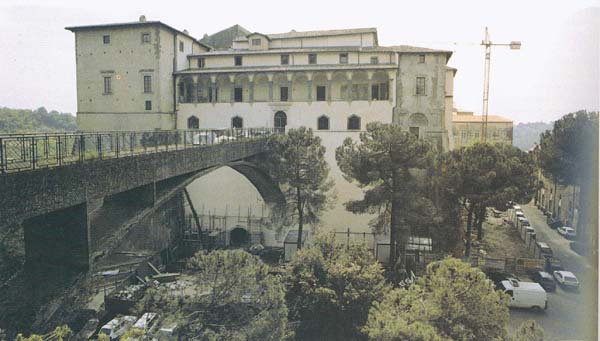|
|
Storia dell'arte - Story of Art
|
|
|
1400
In this Century developed a big interest for the classic culture all across Europe. Most of the greatest painters belong to this period; they refused the Gothic Principles and created a new style. Brunelleschi (architect), Donatello (sculptore) and Masaccio (painter) caused an artistic revolution in Florence; the art became a tool of investigation of the New World. The use of the perspective gave the artists of that period the chance to renovate the antic and classic art. The classic art was not seen as a style to imitate; anyway Brunelleschi and Donatello studied in Rome the antic monuments to learn something abut the ancient world as a source of inspiration. Donatello created a new kind of classic nude (David Bronzeo) and of classic portrait. He created new effects of light and movement (Pulpito di Santa Maria del Fiore;Altare del Santo, Padova; San Giovanni, Duomo di Siena; Monumento di Gattamelata, Padova). The other great Sculptors who worked at that time were Desiderio da Settignano and Luca della Robbia. Among the painters, Masaccio (who was inspired by Giotto’s style) gave big prominence to the human being in his works. Brunelleschi did the same, but in his scupltures (San Lorenzo , Cappella dei Pazzi). Paolo Uccello and Piero della Francesca absolutely represented two icons of the first half of the century. Paolo Uccello used Geometric Structures as perfect forms, Piero della Francesca combined dramatic colors in a strict idea of space. Andrea del Castagno (Affreschi del Cenacolo di Santa Apollonia), Domenico Veneziono (Pala di Santa Lucia degli Uffizi), Benozzo Bozzoli (Cappella di Palazzo Medici Riccardi) worked in the same period with a very similar style. Leon Battista Alberti used a “strong” classis style in his works, sometimes too artificial, but very poetic. (Tempio Malatestiano, Rimini; Facciata di Santa Maria Novella, Firenze). Urbino, Ferrara and Venice were together with Florence the most important cities of that time. Piero della Francesca worked long time in Urbino where there was one of the biggest cultural centre of the century. Venice got more importance in the second half of the century. Thanks to the strong cultural relationship between Venice and Florence, a lot of great artists of the Venetian art started their work: Giovanni Bellini (Pietà, Madonna degli Alberelli) and Andrea Mantegna, developed the classic modules (Cristo di Brera, Camera degli Sposi). Bellini’s Brother, Gentile worked with Carpaccio in Veneto. In the second half of 1400 there was at first a crisis of values in Florence, but after that some of the greatest artists of that century stood out (Domenico del Ghirlandaio). With Verrocchio the values of the Renaissance had been fully expressed. He is considered the precursor of Botticelli, Leonardo, Filippino Lippi, Piero di Cosimo, Pollaiolo and Sangallo. Sandro Botticelli (Nascita di Venere, La Primavera, La Calunnia) was the first who refused the rigid values of 1400 and introduced the pagan culture in his works. By other hand, in Leonardo’s works (Il Paesaggio, Uffizi di Firenze) the colors produced some effects of the light that made no connections between the Human Beings and the surrounding Landscape in the paintings. Leonardo’s artistic activity represents a sort of link between the Umanistica culture and the new style of 1500, especially in the areas where he worked (Lombardia, Veneto, Francia). Borgogne was also a very important cultural centre in that period, with the activity of the Limbourgs brothers (Libro d’ore del Duca di Berry). The most important representatives of the Miniaturists style were : Jan Ven Eyck, Hans Memling, Petrus Christus, Roger van der Weyden, Hugo van der Goes. In Germany (Lega Anseatica and Westfalia) there was also in that period and intense artistic activity; in Cologne the greatest Artists were Stephen Loechner, Konrad Witz abd Martin Shongaues. Luca di Leida from Holland was the most important engrever and he became famous also in Italy. In France the Illustration of Manuscripts and the portraits became very important.
|
|
|
